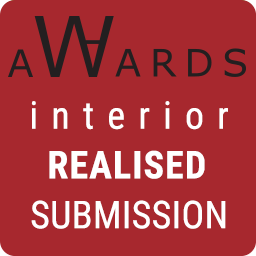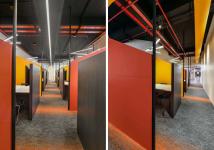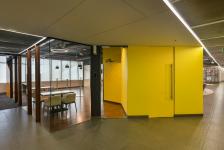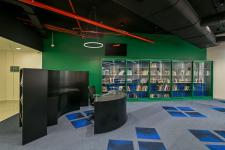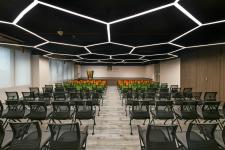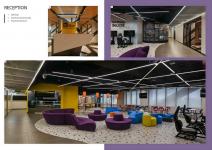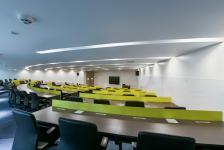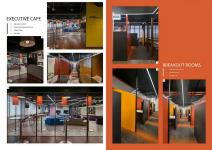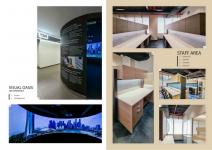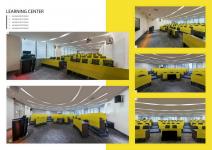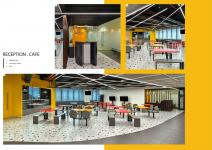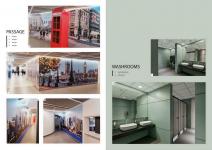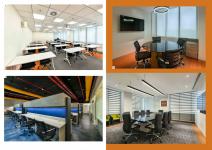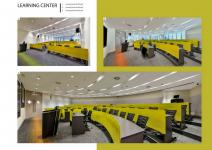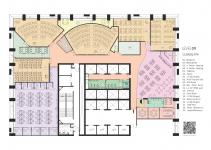World Architecture Awards 10+5+X Submissions
World Architecture Awards Submissions / 53rd Cycle
Vote button will be active when the World Architecture Community officially announces the Voting period on the website and emails. Please use this and the following pages to Vote if you are a signed-in registered member of the World Architecture Community and feel free to Vote for as many projects as you wish.
How to participate
WA Awards Submissions
WA Awards Winners
Architectural Projects Interior Design Projects
Architectural Projects Interior Design Projects
S. P. Jain School of Global Management, Mumbai Campus Interior
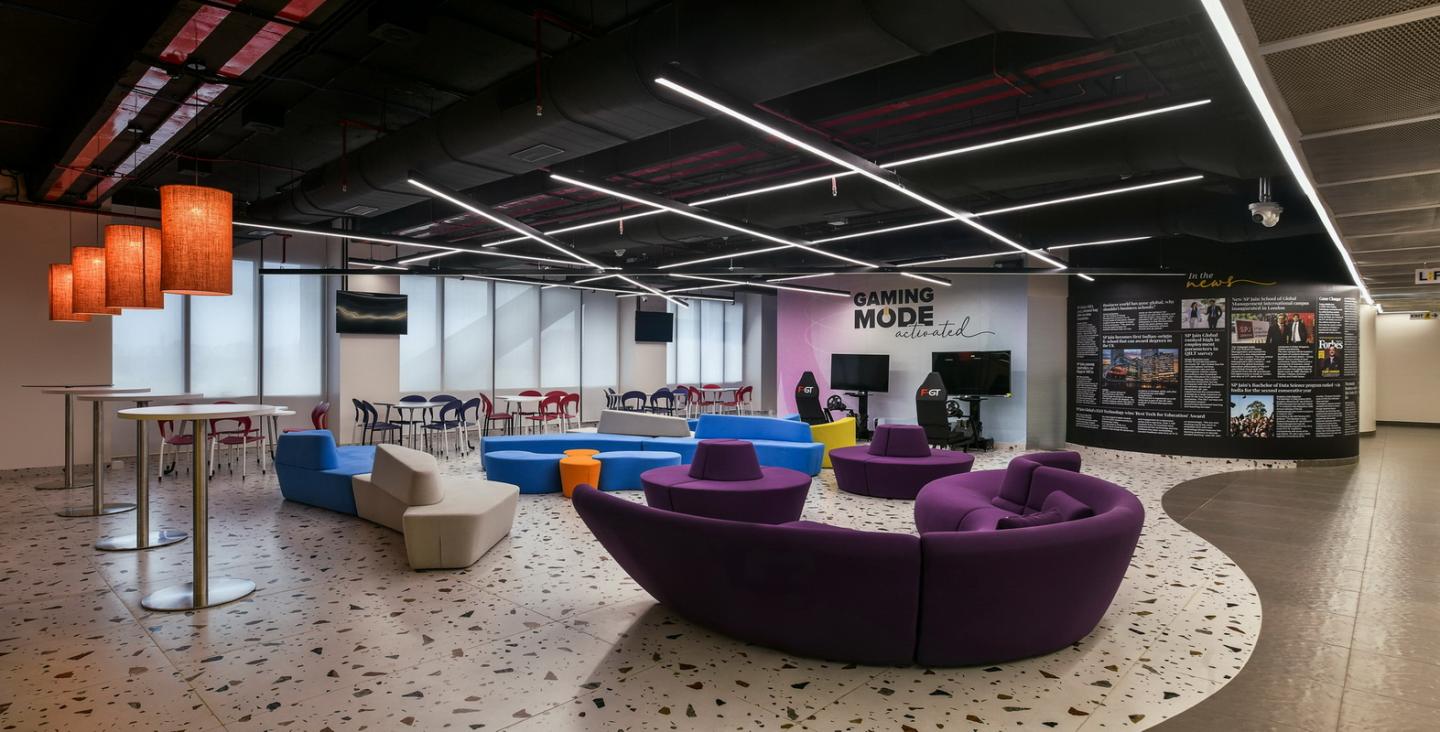

EMBRACING THE FUTURE: A CAMPUS DESIGN FOR THE GEN Z ERA
In the ever-evolving landscape of education, campus design plays a pivotal role in shaping the learning experience. As we look to the future, it’s crucial to create environments that are not only aesthetically pleasing but also functional, interactive, and reflective of the globalized world we live in. A campus with a vibrant and international flavor, catering to the Gen Z generation, is a testament to the commitment to innovation and inclusivity in education.
VIBRANCY THROUGH DESIGN
A vibrant campus design is more than just a visual treat; it’s an embodiment of energy, creativity, and the joy of learning. Bright, open spaces with innovative architecture and a splash of colour can invigorate the learning atmosphere. Incorporating green spaces, art installations, and interactive zones further adds to the campus’s vibrancy, creating a conducive environment for both studying and socializing.
AN INTERNATIONAL EXPERIENCE
In a world that is increasingly interconnected, an international flavor is a must. Our campus design reflects a commitment to diversity and cross-cultural exchange. It includes spaces for international student lounges, cultural centers, and global cuisine options. Thematic elements from different cultures enhance the international ambiance, making all students, regardless of their background, feel welcome and valued.
CATERING TO THE GEN Z GENERATION
Understanding the Gen Z generation is key to successful campus design. This tech-savvy
generation thrives on innovation and interactively, Smart classrooms equipped with the latest teaching tools, virtual reality labs, and tech hubs promote an engaging learning experience. Flexible learning spaces accommodate both collaborative and independent work, adapting to Gen-Z’s dynamic learning preferences.
INTEGRATION OF TECHNOLOGY
Technology is not just a tool but an integral part of the modern learning experience. Our
campus is equipped with interactive technology, making lessons more engaging and accessible.
Virtual learning platforms and digital libraries to empower students to take control of their education.
A FRIENDLY AND INVITING ATMOSPHERE
Friendliness and warmth are central to our campus’s design philosophy. Common areas with comfortable seating, cozy nooks for group discussions, and open courtyards create inviting spaces for students to connect, relax, and recharge. A friendly campus culture fosters relationship and a sense of belonging, making it easier for students to thrive academically and socially.
In conclusion, a vibrant, international, Gen-Z focused campus design with the integration of the latest teaching tools and interactive technology embodies the future of education. By embracing these concepts, our institution commits to providing a holistic and enriching educational experience for all students, preparing them to thrive in a globally connected world. Welcome to a campus where innovation, inclusivity, and the joy of learning come together to shape a brighter future.
Interior Area
5th Floor = 20,000 SFT ( 1860 SMT)
9th Floor = 12,000 SFT ( 1115 SMT)
Interior Design Team:- Vishal Parmar, Ankit Jain, Vishal Sawant, Dighant Moolya, Sanika Kajare
MEP Consultant:- ARKK Consultants, Mumbai
PMC:- DACPL, Mumbai
In the ever-evolving landscape of education, campus design plays a pivotal role in shaping the learning experience. As we look to the future, it’s crucial to create environments that are not only aesthetically pleasing but also functional, interactive, and reflective of the globalized world we live in. A campus with a vibrant and international flavor, catering to the Gen Z generation, is a testament to the commitment to innovation and inclusivity in education.
VIBRANCY THROUGH DESIGN
A vibrant campus design is more than just a visual treat; it’s an embodiment of energy, creativity, and the joy of learning. Bright, open spaces with innovative architecture and a splash of colour can invigorate the learning atmosphere. Incorporating green spaces, art installations, and interactive zones further adds to the campus’s vibrancy, creating a conducive environment for both studying and socializing.
AN INTERNATIONAL EXPERIENCE
In a world that is increasingly interconnected, an international flavor is a must. Our campus design reflects a commitment to diversity and cross-cultural exchange. It includes spaces for international student lounges, cultural centers, and global cuisine options. Thematic elements from different cultures enhance the international ambiance, making all students, regardless of their background, feel welcome and valued.
CATERING TO THE GEN Z GENERATION
Understanding the Gen Z generation is key to successful campus design. This tech-savvy
generation thrives on innovation and interactively, Smart classrooms equipped with the latest teaching tools, virtual reality labs, and tech hubs promote an engaging learning experience. Flexible learning spaces accommodate both collaborative and independent work, adapting to Gen-Z’s dynamic learning preferences.
INTEGRATION OF TECHNOLOGY
Technology is not just a tool but an integral part of the modern learning experience. Our
campus is equipped with interactive technology, making lessons more engaging and accessible.
Virtual learning platforms and digital libraries to empower students to take control of their education.
A FRIENDLY AND INVITING ATMOSPHERE
Friendliness and warmth are central to our campus’s design philosophy. Common areas with comfortable seating, cozy nooks for group discussions, and open courtyards create inviting spaces for students to connect, relax, and recharge. A friendly campus culture fosters relationship and a sense of belonging, making it easier for students to thrive academically and socially.
In conclusion, a vibrant, international, Gen-Z focused campus design with the integration of the latest teaching tools and interactive technology embodies the future of education. By embracing these concepts, our institution commits to providing a holistic and enriching educational experience for all students, preparing them to thrive in a globally connected world. Welcome to a campus where innovation, inclusivity, and the joy of learning come together to shape a brighter future.
Interior Area
5th Floor = 20,000 SFT ( 1860 SMT)
9th Floor = 12,000 SFT ( 1115 SMT)
Interior Design Team:- Vishal Parmar, Ankit Jain, Vishal Sawant, Dighant Moolya, Sanika Kajare
MEP Consultant:- ARKK Consultants, Mumbai
PMC:- DACPL, Mumbai
